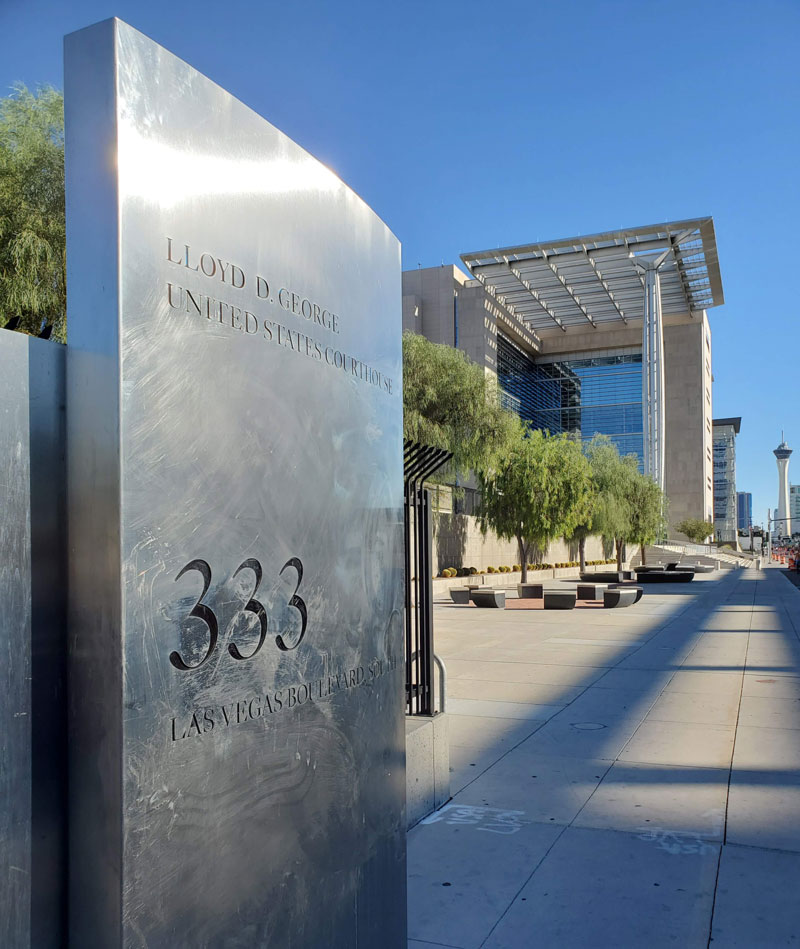
Benches outside of the Lloyd D. George Courthouse in Las Vegas designed by Howard Ben Tré
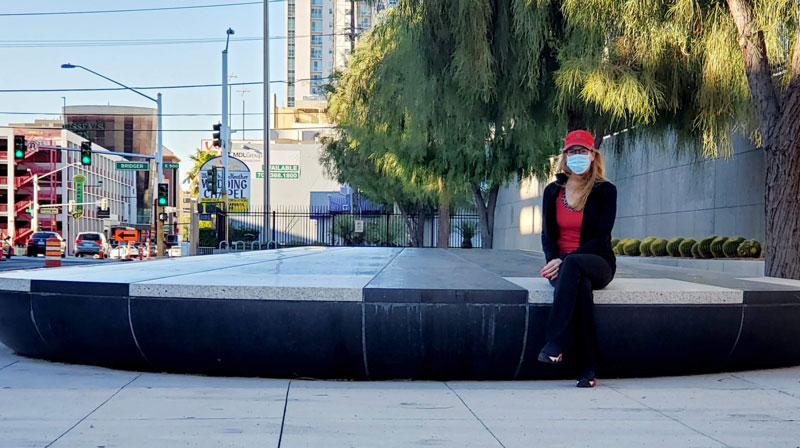
VORTEX, STREAM AND CONFLUENCE
A TRIBUTE TO HOWARD BEN TRÉ
By Stacey Gualandi
I have driven by the Lloyd D. George Courthouse on Las Vegas Boulevard so many times over the years, yet I never took the time to stop and really appreciate these three black and white granite benches located on the sidewalk out front.
But recently I visited Vortex, Stream and Confluence, a multi-piece installation designed by renowned artist and glass sculpture innovator Howard Ben Tré. I spent over an hour walking through the stone structure, taking pictures, and admiring his work.
Howard was family — in 2004, he married my cousin Wendy MacGaw, an award-winning artist and founder of Artpack Services, Inc.— so this long overdue visit was a bittersweet one. Last month, he passed away after a lengthy illness.
Howard was just 71.
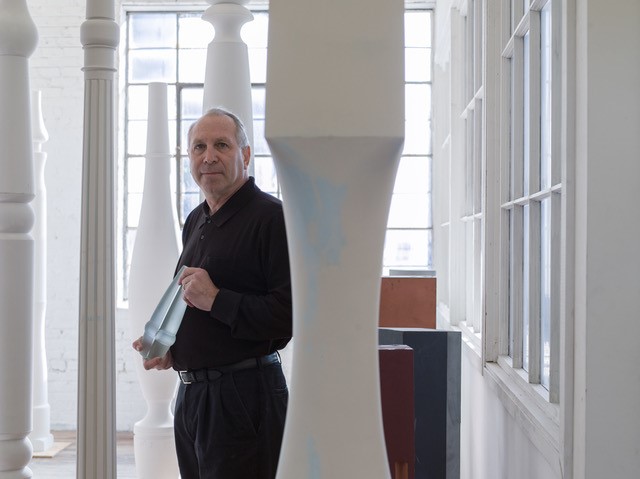
Photo of Howard Ben Tré by Lucas Foglia
“Through the beauty of his work, Howard hoped to create a more humanistic space which asks people to interact with each other,” says Wendy of her husband’s philosophy.
“It meant so much that his art was important enough to be on public display [and that he] earned the trust and confidence to produce what he said he would produce. He never failed to fulfill his vision.”
Coming of age in the 60s, Howard embraced political activism. But his desire for social change eventually turned from organizing into making art, specifically in public works.
Early on, the famous glass sculptor Dale Chihuly — a mentor and long-time friend — recruited him to the Rhode Island School of Design. While Chihuly went on to international fame in the field of blown glass, Howard emerged as a pioneer in the use of cast glass, an ambitious process that many believed couldn’t be done.
My cousin says she and Howard first met in 1980 at Haystack, the international craft school in Maine where he taught glass casting.
“No one was pouring glass like he did,” says Wendy. “He treated glass like bronze and he figured out how to do it so that it would last…outdoors where it wouldn’t crack like an ice cube.”
He refined the technology and four decades later, his innovative work is in more than 100 museum and public collections worldwide, including the pedestrianization and street scheme redesign of Warrington Town Center in England; the award-winning installation of fountains and seating created for Post Office Square Park in Boston; and plazas, with sculpture, fountains and landscaping for Target Corporation Headquarters in Minneapolis.
In an interview with the Smithsonian’s “Archives of American Art” in 2007, Howard said his primary goal was to build a community where people can experience art without going to a museum.
“[I want] a seating environment where people are not looking up, but are looking at each other and establishing a personal dynamic,” said the Brooklyn native. “I want to get rid of the anonymity in our culture and society.”
That was exactly his intention with Vortex, Stream and Confluence: a piece of art as sculpture and as a practical seating area.
“His art is not this precious thing. It’s part of what you can use,” says Wendy. “He wanted you to sit on his artwork; he wanted you to interact with it.”
Thanks to my cousin – who is coming to terms with the loss of her “larger-than-life” partner – I now have a better understanding of Howard’s motivation for this project, one that remains a prominent fixture in downtown Las Vegas. (Interestingly, it’s a rare public work without his signature glass!)
In 1998, he beat out several artists to earn the U.S. General Services Administration courthouse commission; he completed the project two years later. Howard said at the time “the scarcity of water in a desert environment, and the role that water has historically played in bringing groups of people together” inspired him.
I definitely see how the three separate bench areas are metaphors for moving water: the origin (vortex) of a lake or pool in the first sculpture flows (stream), pooling again at the next sculpture and then, finally ending in the smallest pool (confluence), representing “the shrinking of water consumption faced by Las Vegas and Nevada.”
Howard hoped to offer a wide variety of ways to experience the space and to interact with other people in it; an idea that has relevance now with our current social distancing dynamic.
“People need to be in public spaces now more than ever. His work is available to them to social distance, yet still be together,” says Wendy.
Thankfully, Howard’s work will remain available to us around the world for decades to come. I find comfort in knowing that, in the future, every time I drive by the courthouse, I’ll be able to pay tribute to his legacy.
“He just wanted to make work. He was always more interested in, What’s next? The idea of interpreting his legacy, that was for somebody else to do because he was too busy looking to the future. If he had been with us a little bit longer, he’d still be out there trying to create more work.”
Learn more at www.bentre.com.
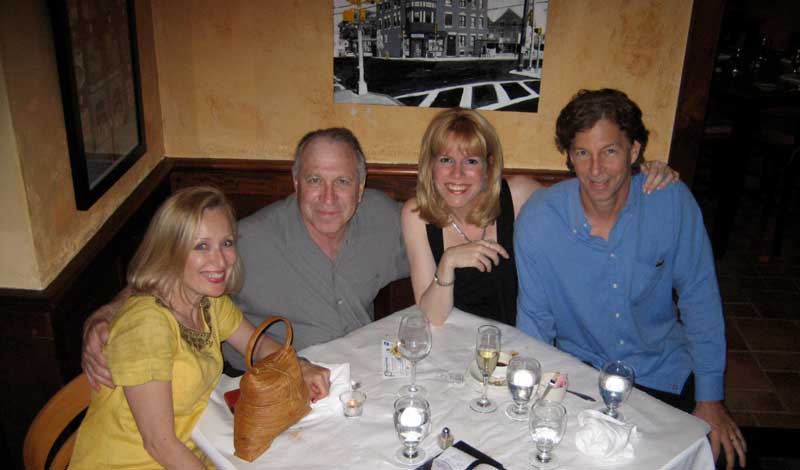
Wendy, Howard, Stacey, and Marty

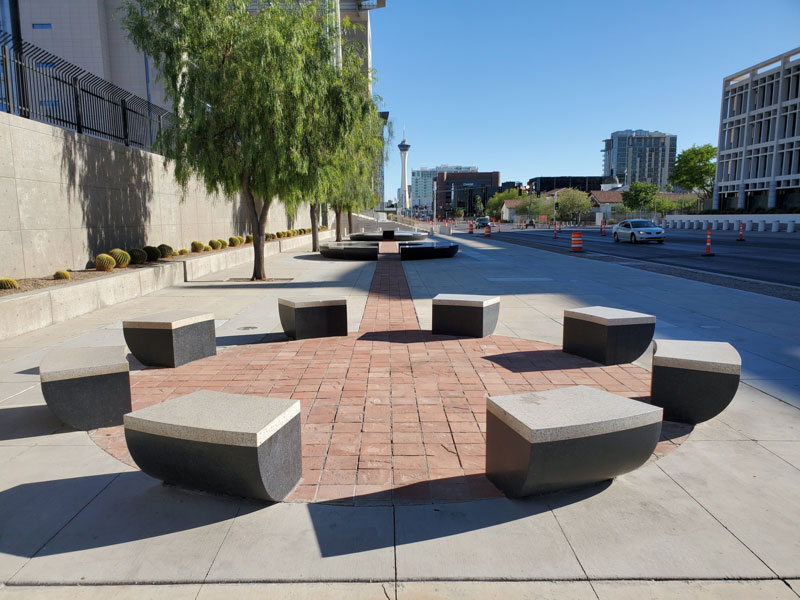
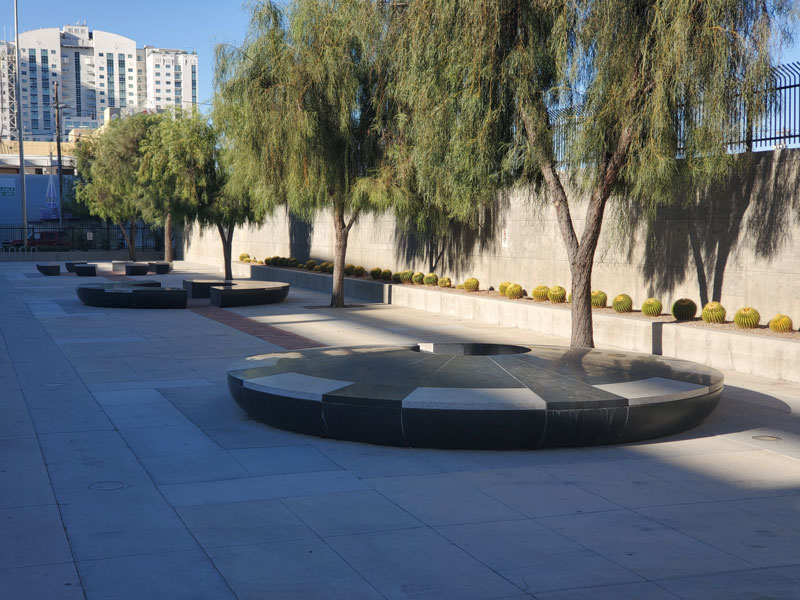


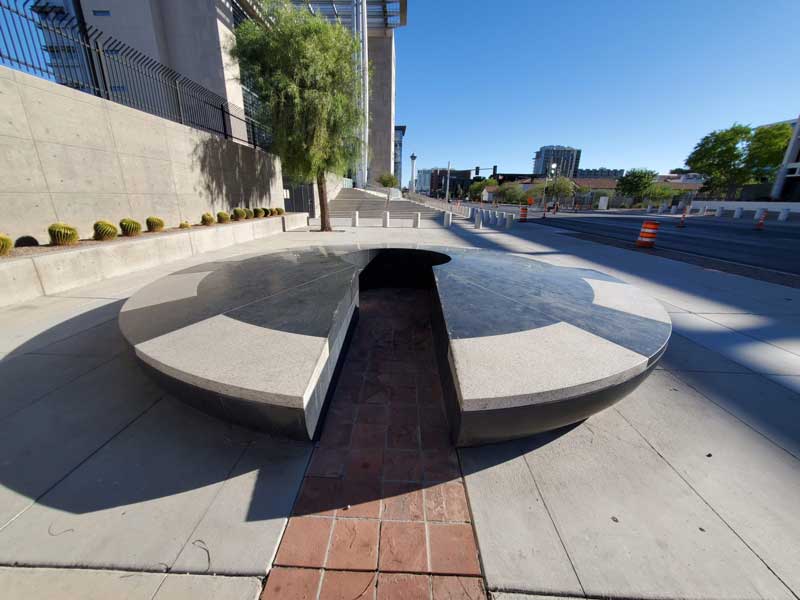
The work is unique even before the translation given in the article. Thank you Stacey for enlightening me and I am sure others of such work done here in Las Vegas.